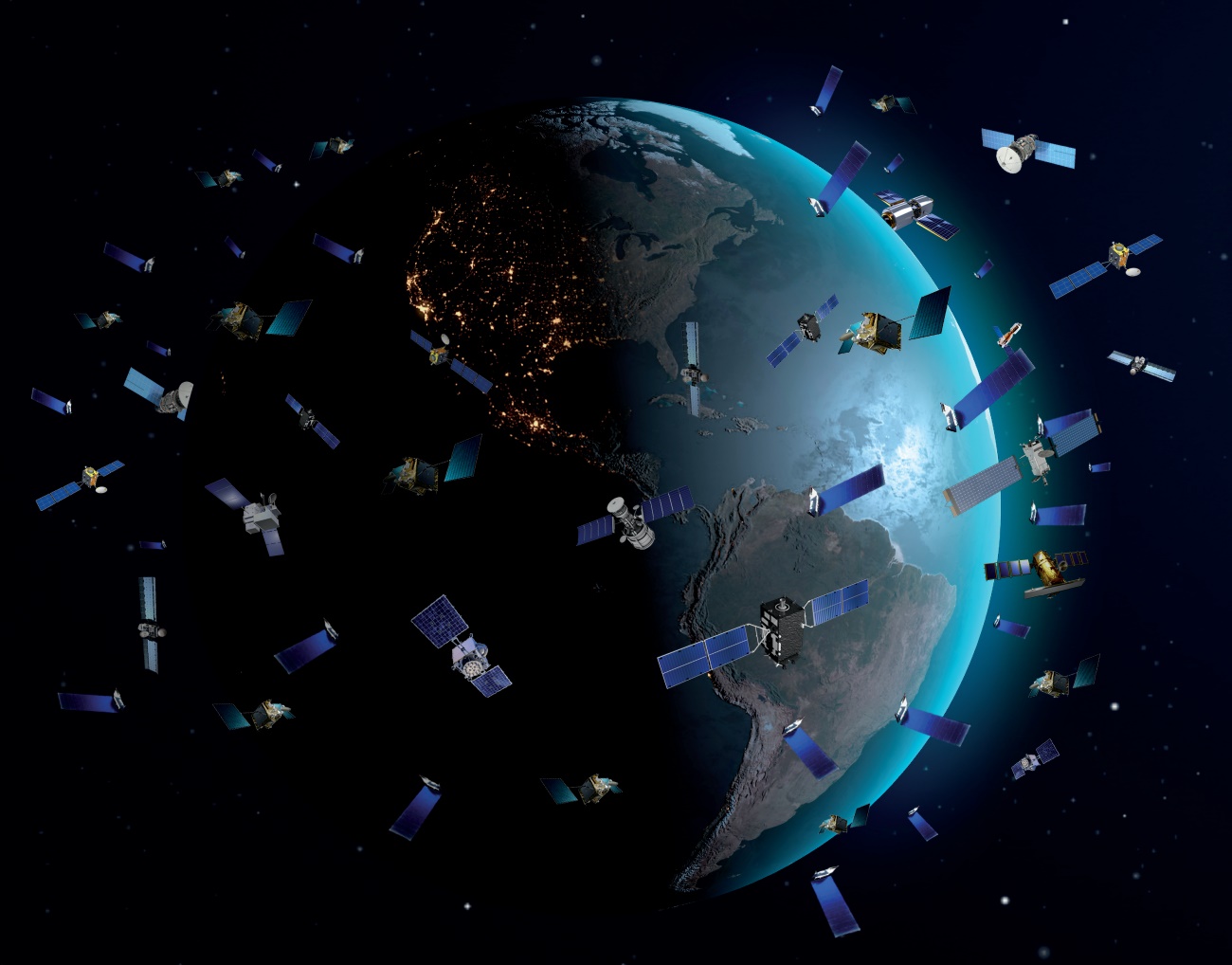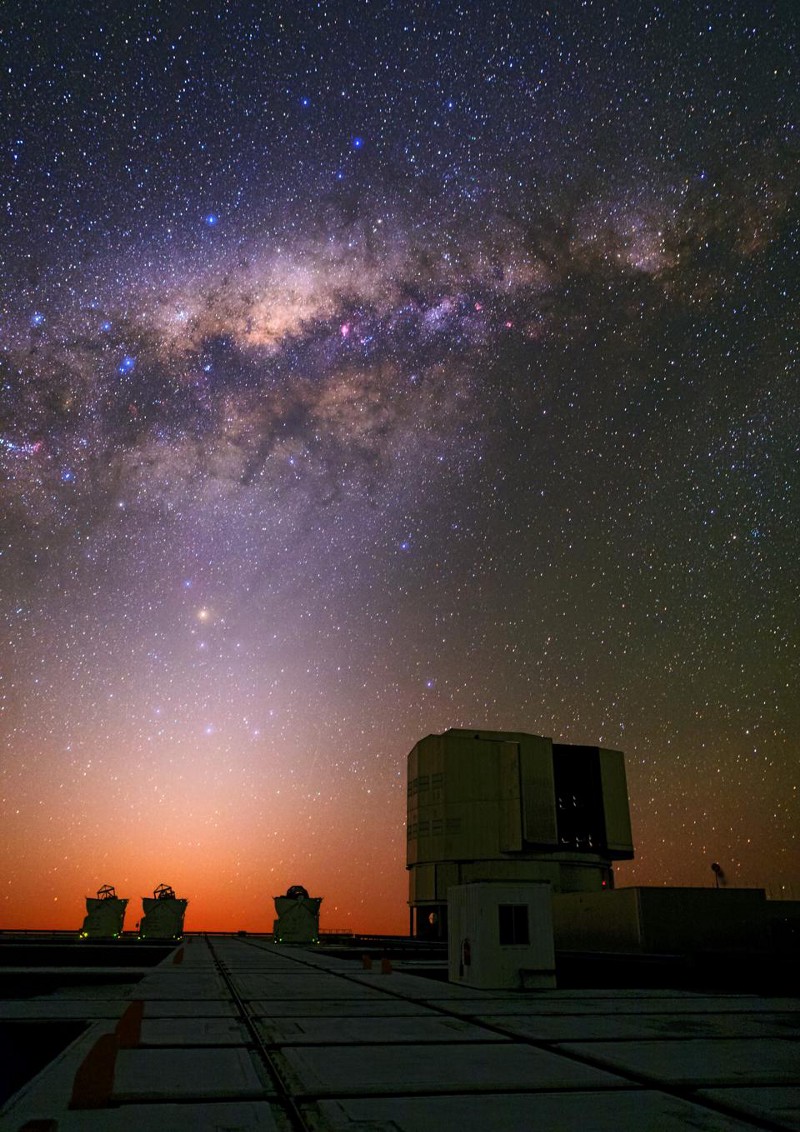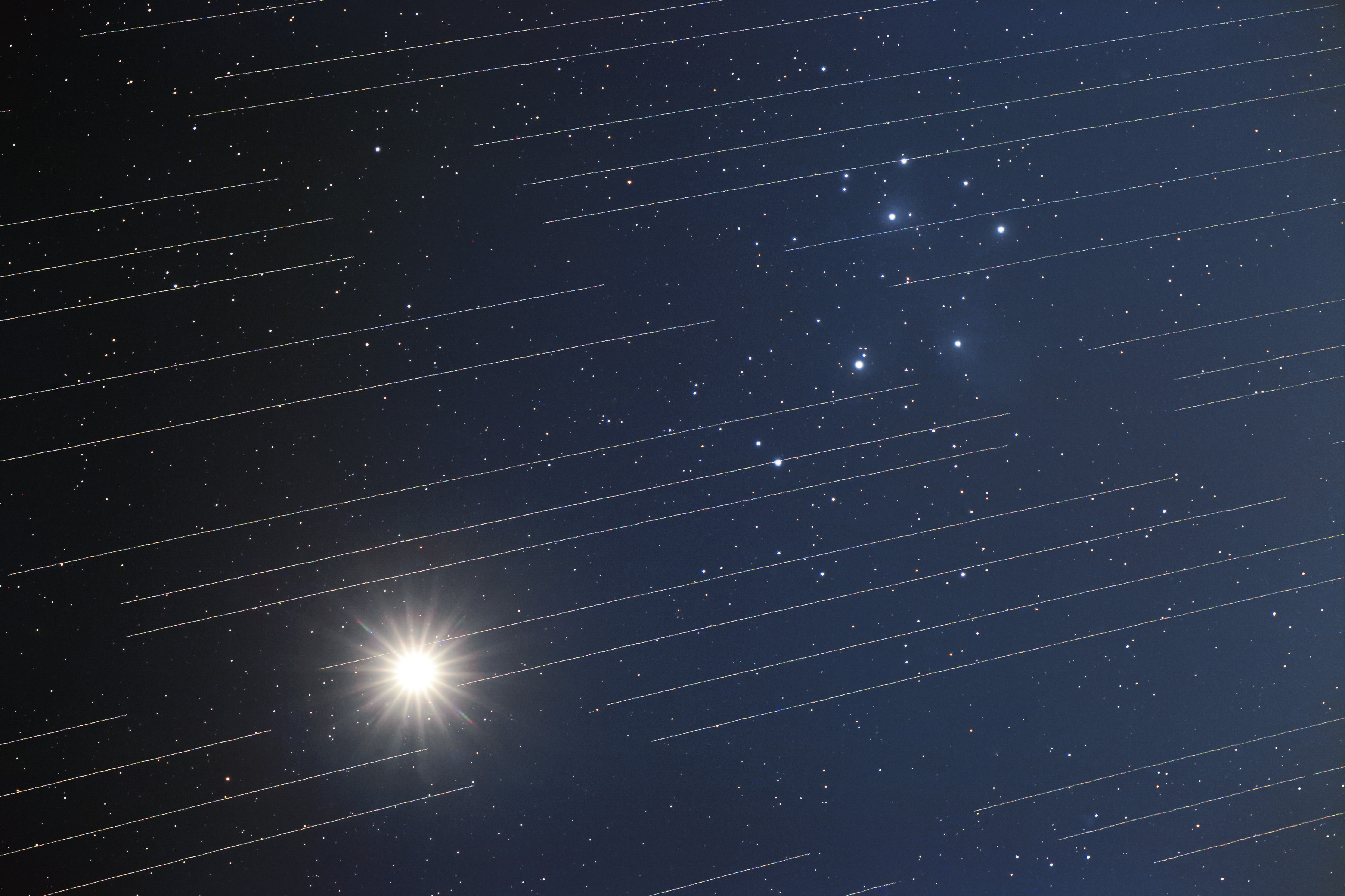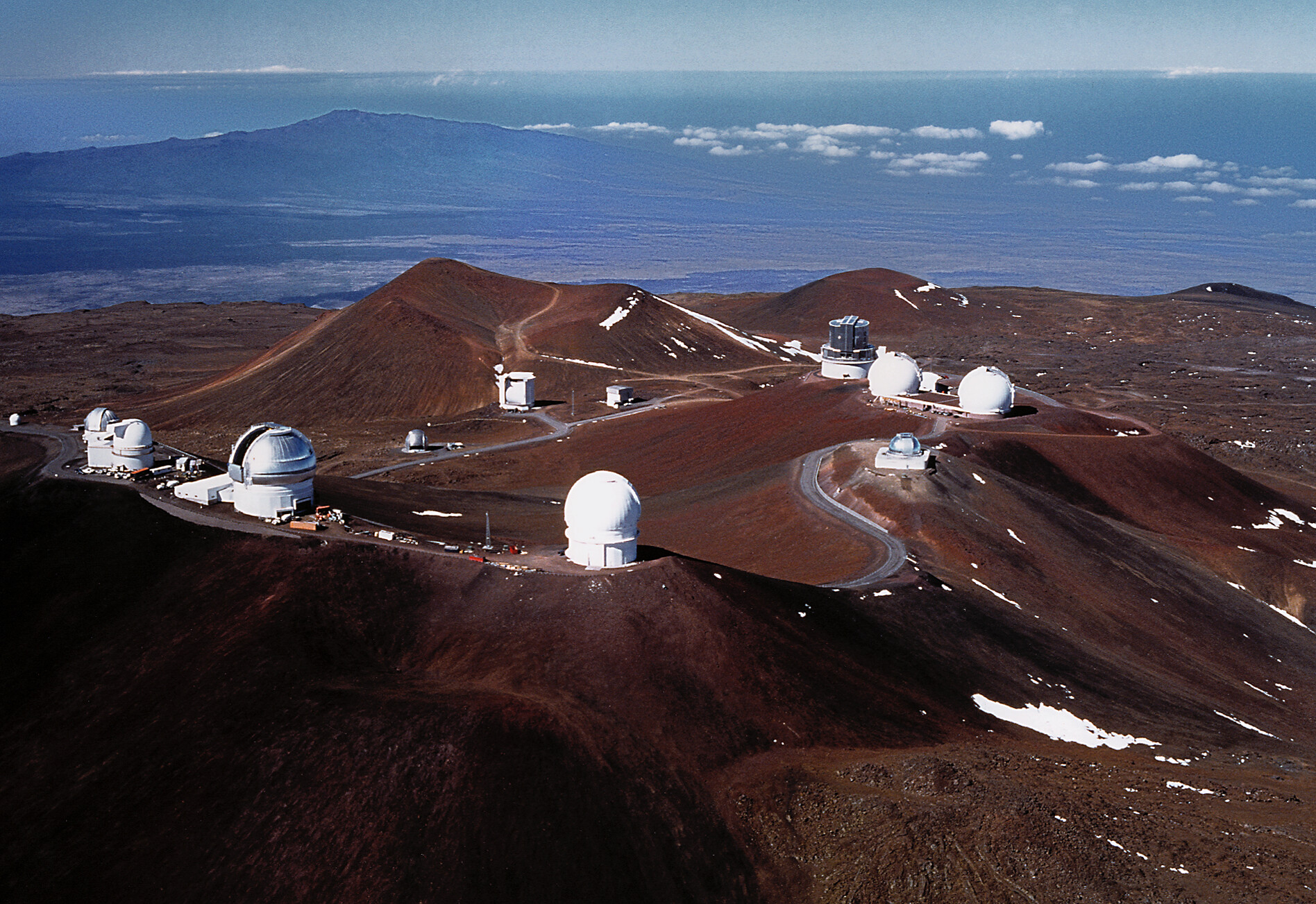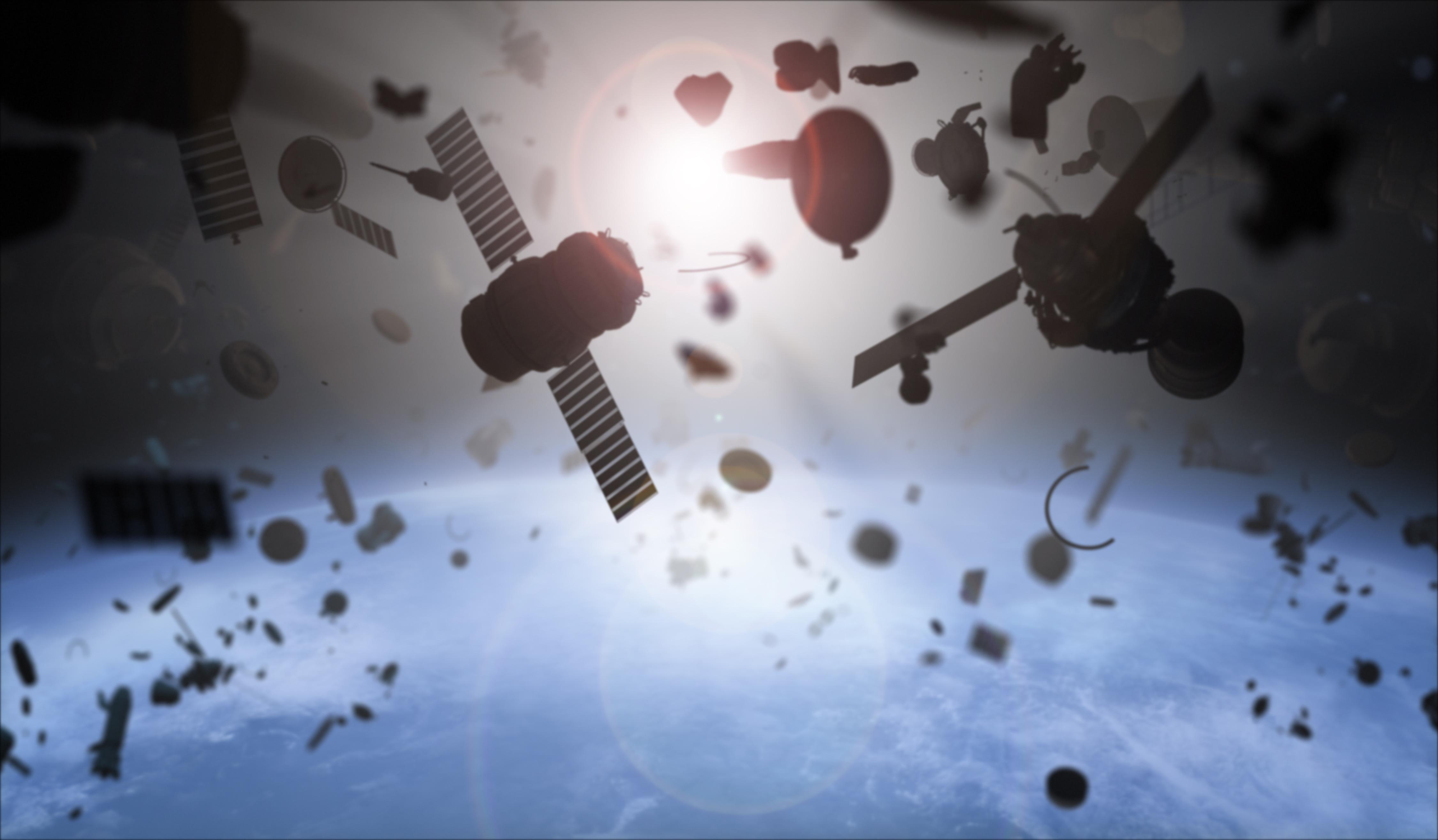Can technology save astronomy from light pollution?
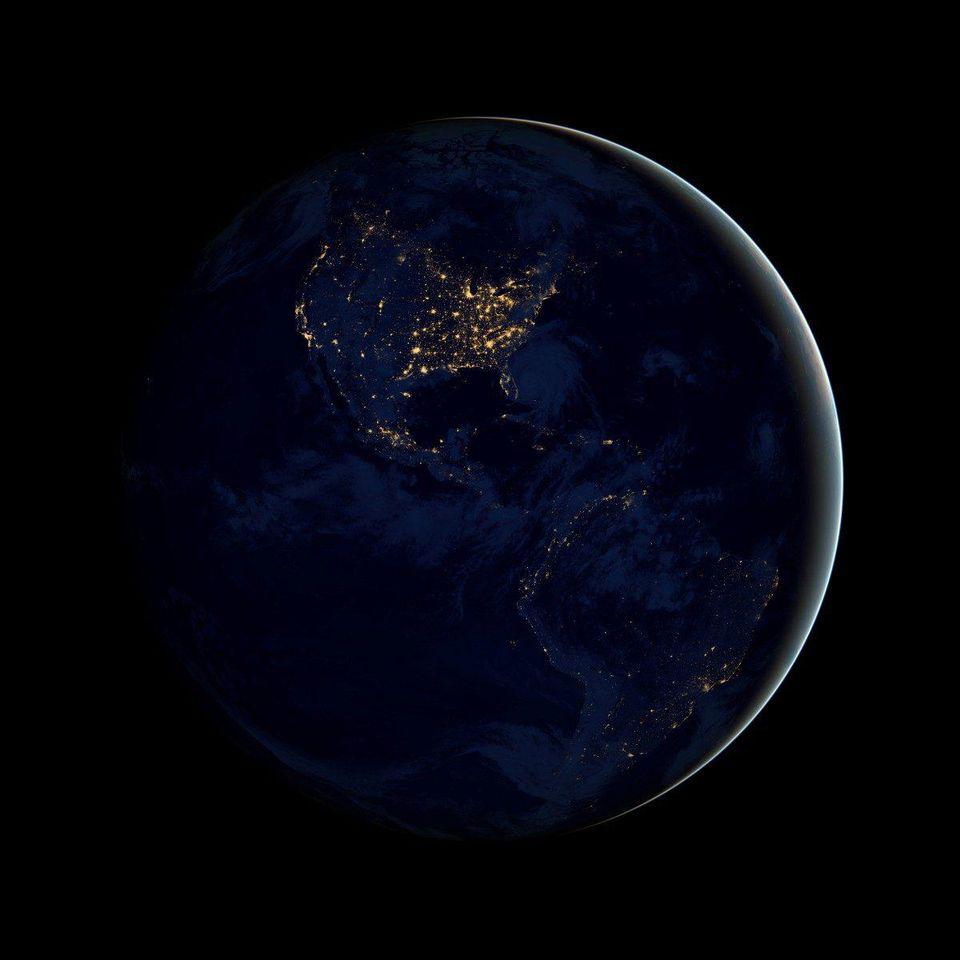
- Over the 20th and 21st centuries, the revolution and expansion of electric lighting has brightened the night sky tremendously, making professional and amateur astronomy much more difficult.
- In recent years, enormous numbers of incredibly bright, reflective satellites have also gone up, with many thousands more to come, creating a new type of light pollution: from satellite “streaks.”
- Although software solutions are wildly insufficient and we’re seeing lighting and satellite numbers only increase, it might be time to explore new technological solutions to these problems. Here are three to consider.
For nearly all of human history, once the Sun went down and the sky darkened, so long as you had a clear, moonless night, you’d be greeted with a spectacular, thrilling night sky: with thousands of stars, a clear view of the Milky Way, and several faint, fuzzy nebulae all visible to your naked eye. If each of us were to look up at a clear, moonless sky tonight, however, most of us would only see a few dozen stars, with the rest being washed out by a triumph of modern technology: nighttime lighting. Furthermore, even those of us with access to darker, more rural skies are subject to a rising type of novel light pollution: pollution from light reflected off of satellites, which continuously streak through the sky in tremendous numbers.
While this is a troubling situation that disrupts the behavior of humans and all animals, it affects astronomers more than most, as the field of astronomy relies on being very sensitive to faint objects in the night sky; more light pollution of all types, including from bright satellite streaks, means lower-quality science for all. Just as a new era of ground-based astronomy is about to open up — with the Vera Rubin Observatory, the Giant Magellan Telescope, and the European Extremely Large Telescope all nearing completion — this worsening set of problems threatens astronomy as we know it. Given that the number of satellites in low-Earth orbit is scheduled to increase even further and that nighttime skies are getting brighter at a rate of nearly 10% per year, it’s unreasonable to count on environmental regulation as a workable solution. But three plausible technological solutions might help astronomers, both amateur and professional, find a way to still explore, photograph, and understand the Universe.
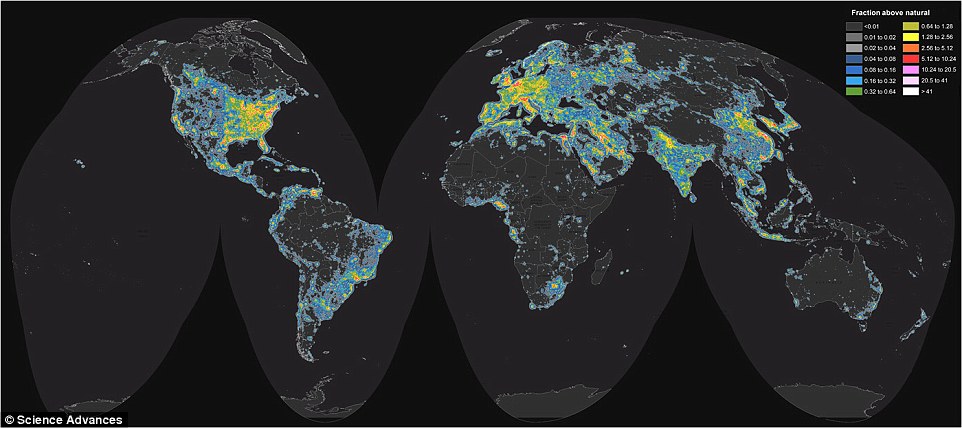
Big problem #1: light pollution
No matter where you go in the world at night, there are very few places remaining that won’t be polluted by some form of artificial light. Cities, highways, and other land-based infrastructure are all illuminated by artificial lighting, providing numerous safety benefits and enabling humans to work during any hour: day or night. Even across the oceans, squid fisheries brightly illuminate areas of our planet that were never lit up prior to the 20th century. Increasingly, dark, pristine skies are more and more difficult to find, and many cutting edge observatories of the 20th century and earlier can no longer contribute meaningful science owing to their locations in light polluted areas.
This has been made far worse in recent years by the rise in LED lighting. While LED lighting has the tremendous advantage of providing more visible light (lumens) for the amount of energy consumed, the amount of light generated by human activity on Earth that gets transmitted into outer space has skyrocketed in recent years. Much of this lighting, as well, is “wasted,” as rather than illuminating the ground where humans are located, they emit light in an omnidirectional fashion, unnecessarily illuminating the skies as well. From nearly all populated areas across North America and Europe, only the absolute brightest stars remain visible to human eyes.
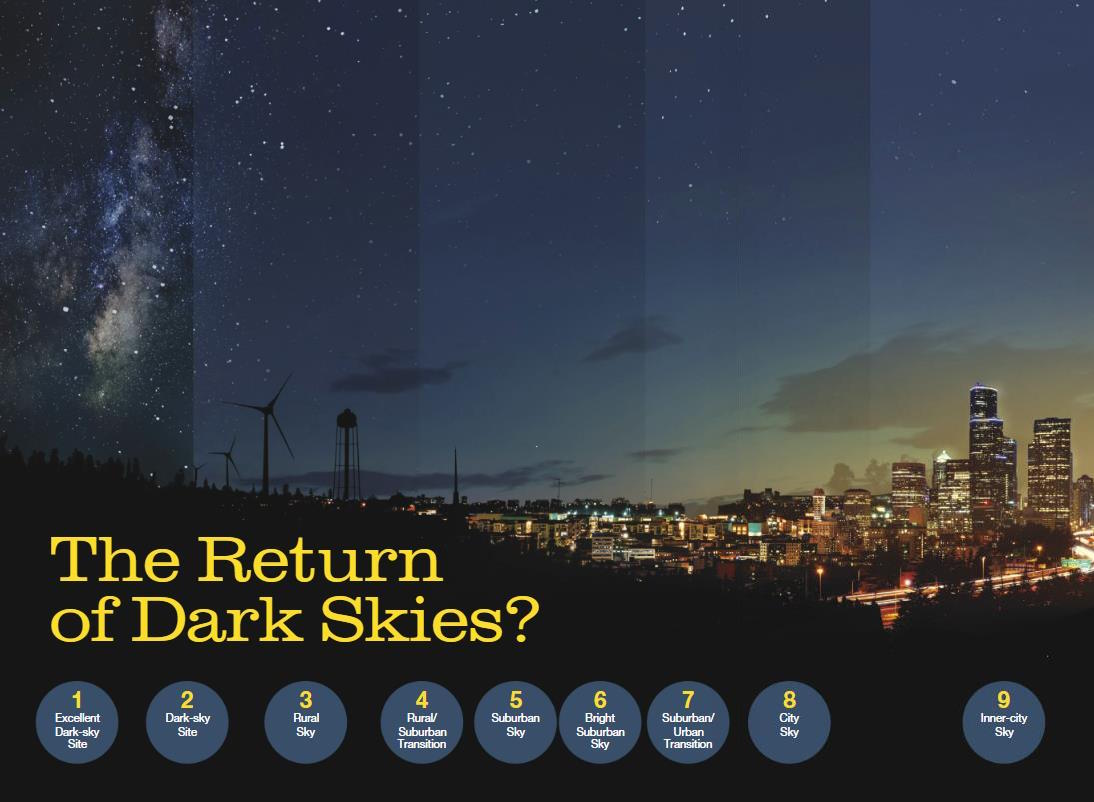
The way astronomers have dealt with the problem of artificial lighting up until now has been to retreat to the few dark sky locations still available, and to partner with surrounding areas to create a dark sky sanctuary: where lighting is limited and highly regulated to avoid flooding the sky with artificial light. At a few select locations in the world, you have the combination of:
- high-altitude, high-elevation conditions,
- relatively close to Earth’s equator,
- with dry, still, largely cloud-free air above you,
- that are far away from any major sources of light pollution,
- and where any population centers within your vicinity have taken mitigations to protect your dark skies.
On the basis of these metrics, the best location in the world for optical astronomy is the summit of Mauna Kea in Hawaii, the second best is in the Andes mountain range in South America, the (arguably) third best is in the Canary Islands in Spain, and so on down the line. Prior excellent locations — on mountaintops all over the world — have been overrun by the development of cities, suburbs, and even brightly-lit places, from car dealerships to truck stops, in relatively rural areas. Some of the most iconic locations in astronomical history are ill-suited for conducting cutting-edge astronomy today for this reason alone.

Big problem #2: satellite pollution
Up until 2019, satellite pollution was relatively negligible, as there were under 2000 active satellites in the sky, most of which were small, faint, and only a few of which were ever visible to human eyes, even under ideally dark skies. Sure, there was the Hubble Space Telescope, the International Space Station, and the constellation of Iridium satellites, which numbered fewer than 100 and which only “flared” to become visible for a few seconds as they rotated in the sunlight. The Global Positioning System, which served nearly the entire world, required only 24 satellites in medium-Earth orbit, none of which were visible to human eyes.
All of that abruptly changed over the past few years, beginning with the launch of SpaceX’s first batch of Starlink satellites. All of a sudden, dozens, then hundreds, then thousands of new satellites entered low-Earth orbit, continuously photobombing observatories in-and-out of this world, including Hubble. As of today, November 15, 2023, there are some ~9000 active satellites, with Starlink making up more than 5000 of them and putting humanity at the greatest risk yet of a chain reaction of orbital collisions. Even when raised to their final orbits, practically all of these satellites remain right around the visibility limit of the naked human eye, while leaving catastrophically bright streaks in astronomical detectors designed to search for ultra-faint signals.
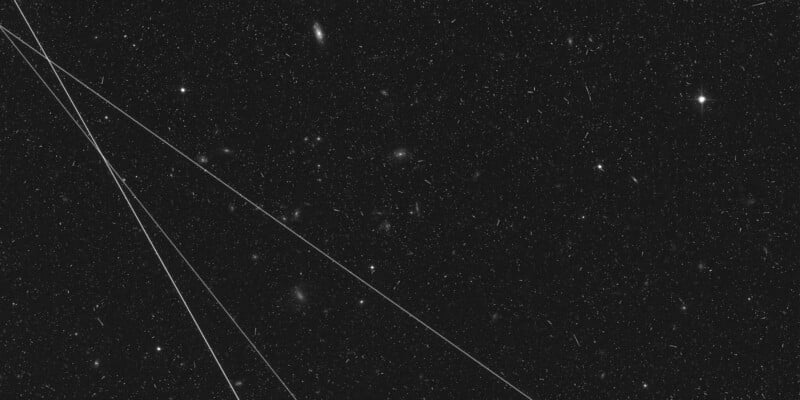
The way that astronomers have dealt with satellite pollution thus far is mostly unsatisfactory; there are precious few good mitigations available. Over 5% of Hubble images taken today were affected by satellite streaks as of 2021; that number has risen to close to 10% in 2023. For ground-based surveys, the situation is even worse, as long-exposures are often needed to bring out faint details and wide-field imaging is used to search for transient events. Detector saturation is a major issue, as a single streak (which lasts for mere seconds) will leave afterimages lasting several minutes, affecting downstream observations as well.
Software mitigations are limited in their effectiveness, as they do nothing to mitigate the effect that satellite streaks have on the hardware within the telescope. Additionally, for upcoming wide-field telescopes, like the Vera Rubin Observatory, there will be satellite streaks affecting the majority of images; there is no “pointing plan” that can avoid these satellites entirely, particularly since their navigation is autonomously controlled by artificial intelligence; there is no “plan” to alert astronomers of the satellites’ future trajectories.
Despite the lack of regulation and only a limited amount of cooperation from industry on both fronts of light pollution, there may be some technological solutions on the near-future horizons that could change this story entirely.

Intervention #1: improved lighting fixtures
It’s hard to believe, but one of the simplest solutions to the lighting problem is one that only a few major cities — notably Tucson, AZ, which is close to Kitt Peak National Observatory — have implemented: regulating light fixtures. Most commonly, light fixtures in public areas are set up to maximize how brightly lit the area is.
But “well lit,” which is how lit up the ground or other eye-level areas are, is not the same as brightly lit. In a well-lit area, it’s easy to see your surroundings, including obstacles, debris, other people, and any hazards that might be present. Brightly lit, on the other hand, refers to how much stray light — i.e., light that doesn’t point “down” at the ground but that brightens the sky — emerges from either your fixtures, directly, or that gets emitted from your fixtures and then reflects off of other objects, eventually reaching the sky.
It has been robustly demonstrated that replacing standard lighting fixtures with fixtures that keep the emitted light pointed downward can greatly reduce how brightly lit an area is without impeding how well-lit the area is, greatly improving any astronomical endeavors. However, despite its low cost, only a few places have become dark sky compliant in this fashion; adoption of these superior fixtures remains an uphill battle. Moreover, this solution only works for ground-based light sources; it does nothing to mitigate satellite pollution.
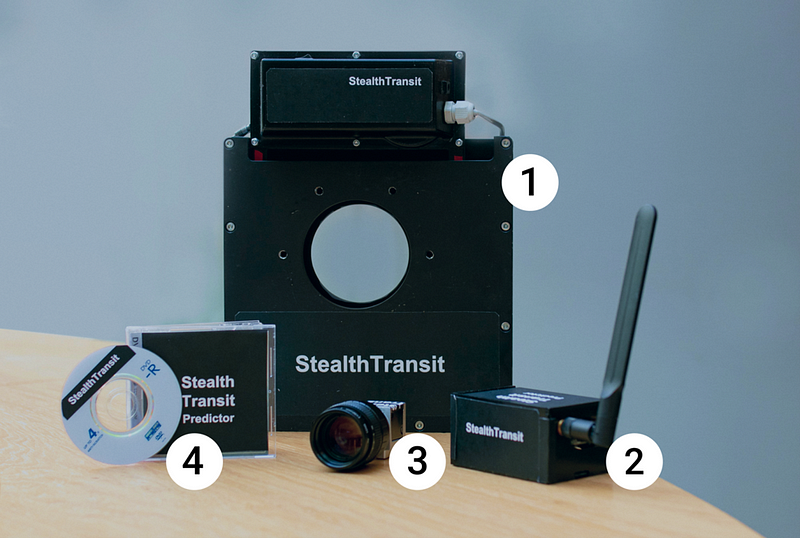
Intervention #2: high-speed shutters
One fascinating potential technological solution to the satellite problem would be the ability to:
- detect when a satellite is about to enter your telescope’s field-of-view,
- have a high-speed shutter close, preventing the satellite’s reflected light from getting in,
- and then having the high-speed shutter reopen again as soon as the satellite has completed its transit.
This would simultaneously minimize the “lost telescope time” without introducing satellite streaks or downstream errors resulting from those streaks into the telescope’s hardware. Yes, you would still lose all the data that you would have taken when the shutter is closed, but the benefit would be that you would eliminate any hardware saturation problems. (It’s the telescopic equivalent of blinking your eyes just when a camera flash goes off.)
While many view this as a technological solution that’s likely to be far off in the future, one company — StealthTransit, led by Vlad Pashkovsky — has come up with an implementation of this idea that doesn’t rely on a foreknowledge of satellite positions and motions. Instead, what their system does is scan a larger area of the sky than is imaged by the telescope to identify streaking satellites, and computes when one is about to enter the main telescope’s field-of-view. By actively and responsively shuttering and un-shuttering the telescope, the effects of satellite trails can be eliminated completely while otherwise minimizing the net data loss.
This type of detection and high-speed shutter technology is already mature, at least for telescopes up to a certain size: enough to cover nearly all amateur telescopes and many of the more modest professional telescopes. However, for the largest professional telescopes — the ones that are essential to astronomy’s future — significant further technological advancement is required to bring this type of technology to fruition. Still, it holds incredible promise: satellites aren’t going anywhere and no one, nationally or internationally, has stepped up with toothsome regulation regarding them.
Thousands more, potentially hundreds of thousands more, are on their way up in coming years, and astronomers, like all of us, are going to have to learn how to live with this problem. Already, estimates for the amount of time an observatory like Vera Rubin will need to observe in order to acquire the data needed for useful science has increased by 20% or more for many applications. Any technological solution that comes into play could potentially save astronomers tens of millions of dollars or more in terms of observing time saved. Even though shutter technology might seem to only help with the satellite problem and not the general light pollution problem, there’s the potential for it to do both in a remarkable way.
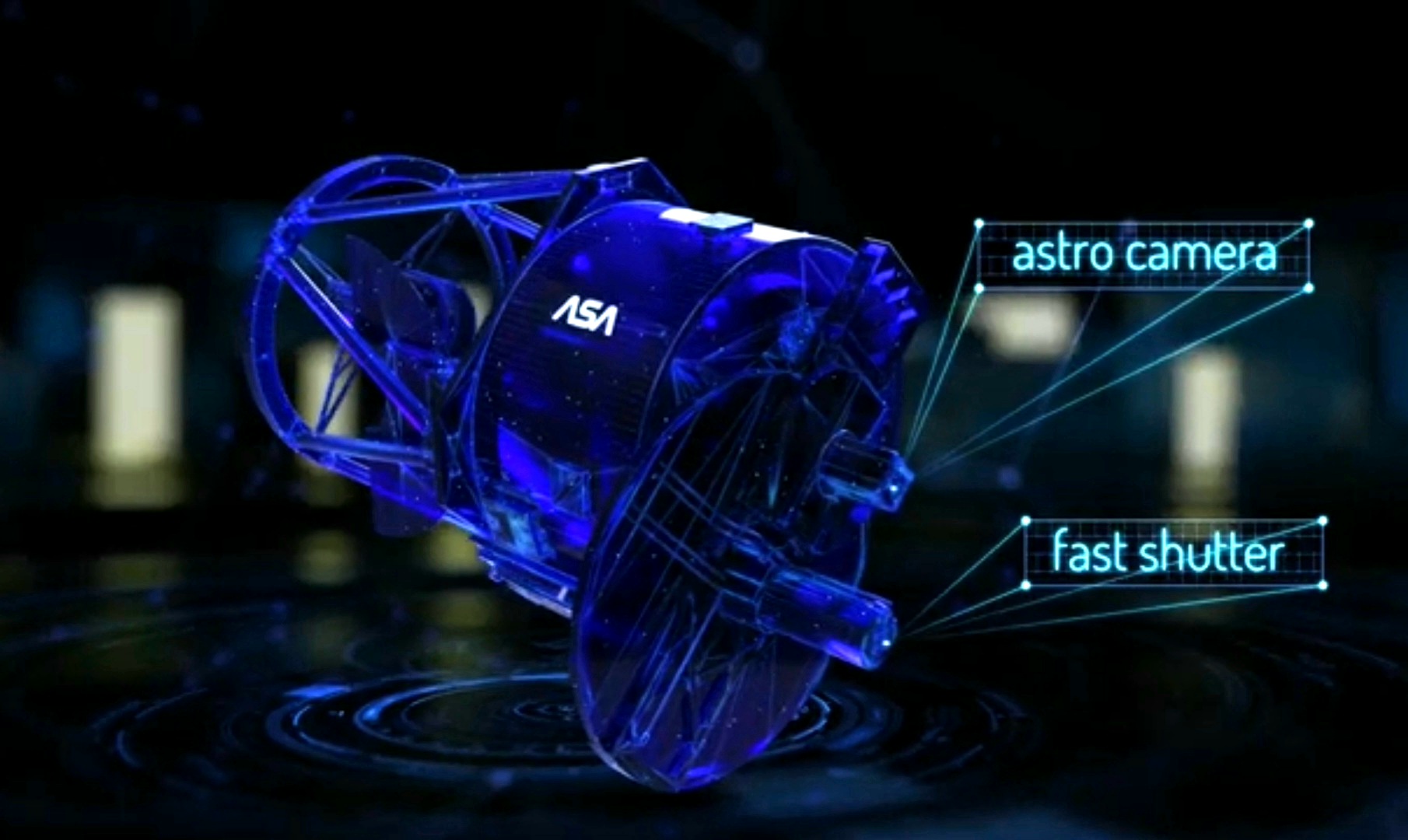
Intervention #3: high-speed shutters plus pulsed lighting
Most of us don’t think about this very often, but ever since incandescent bulbs went out of widespread circulation, the artificial lighting we most commonly use doesn’t output a steady, unwavering amount of light. An old-school incandescent bulb would pass electrical current through a filament, and the resistance of that filament would convert that electrical energy into heat. As the filament heated up, it would emit visible light, and so long as it remained hot, a constant stream of light would be emitted, even as the alternating current source that underpinned the light’s generation repeated its wave-like pattern.
Both fluorescent and LED lights operate differently, however: they flicker between their on/off states between 50-60 and 100-120 times per second, depending on how they’re engineered. The human eye is largely insensitive to this type of flickering (although it is a known trigger for migraine headaches), as the brain typically interpolates continuous motion when receiving as few as 24-30 individual frames of information per second. Although this knowledge has been leveraged for a long time in the world of television and movies, it also has a potentially fascinating application for astronomy: the combination of coordinated “flicker” on a city-wide level with a high-speed shutter for telescopes and observatories.
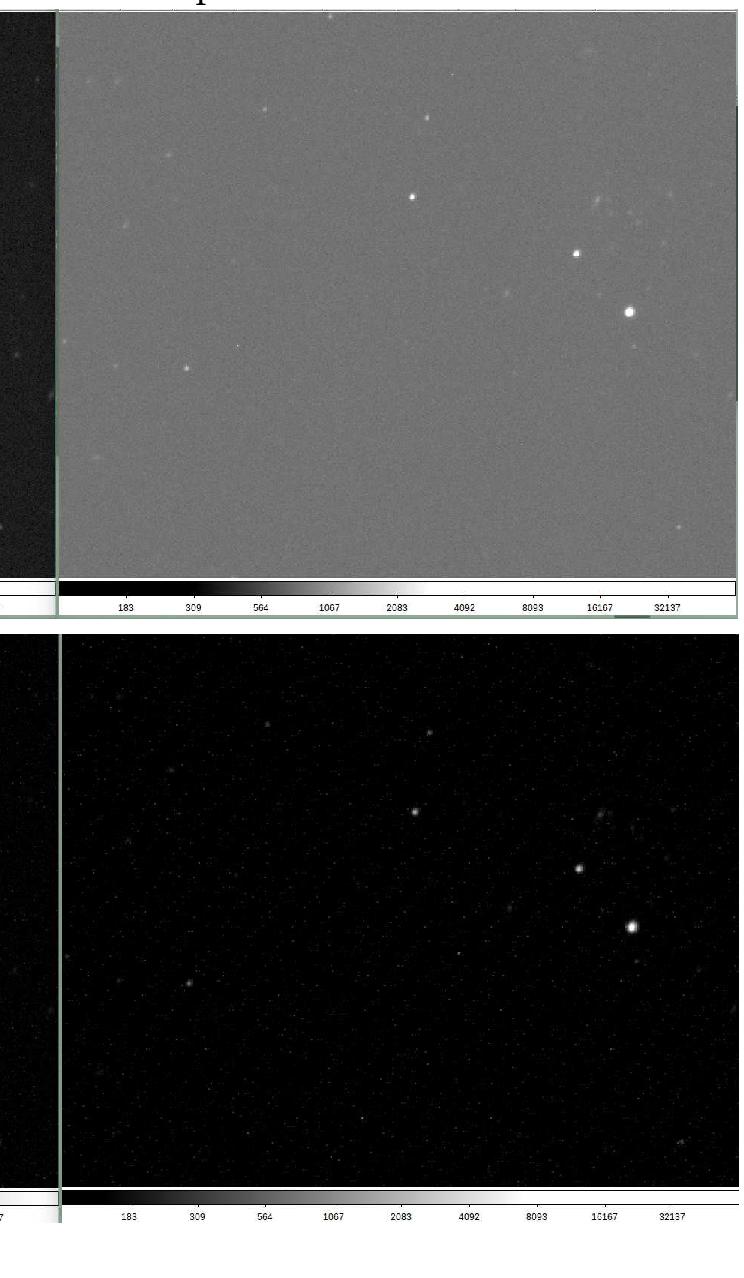
If we can coordinate all the lights within a certain region — including residential, commercial, and industrial lighting, as well as street lights and vehicular lights — to flicker in-phase with one another, then simply closing the telescope’s shutter when the light flashes go “on” and opening the shutter when the light flashes go “off” could enable astronomy to be conducted even in significantly light polluted areas. That’s the idea behind the Dark Sky Protector, developed by the same group that developed the StealthTransit shutter system. According to the CEO of StealthTransit, Vlad Pashkovsky:
“In my opinion, there is currently only one problem holding back the widespread adoption of this technical solution – the lack of reliable high-speed shutters with low optical losses… The goal is a shutter with [only] an optical loss of 10-12%… As a result of these tests it was shown: it is possible to completely protect astronomy from light reflected from roads, snow and water surfaces, as well as from outdoor advertising lights and indoor lighting. This means that observatories and large cities can coexist at night at close range.”
If a controller module can synchronize lighting, such as street lighting, with a fast shutter installed on the telescope, this “switching” can enable high-quality astronomical observations even from heavily light polluted areas.
It’s often been said that “necessity is the mother of all invention,” and with two tremendous problems facing astronomers across the globe — of ground-based light pollution and satellite pollution — a technological solution would be an extremely welcome, and much-needed, savior.
